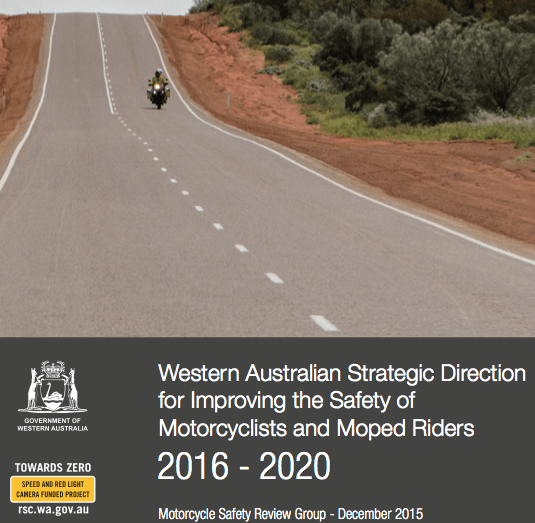
A MAJOR review of motorcycle crashes in Western Australia has found that turning at an intersection during afternoon peak traffic time in metropolitan Perth is the most dangerous situation on the road.
The review, initiated after an horrific run of fatal bike crashes in WA in 2014, has debunked several long-running myths about motorcycle dangers.
It found that in more than 60% of the fatal or catastrophic crashes in 2013 and 2014, there was no involvement of alcohol, drugs, speed or inattention. Instead, ‘failure to give way’ stands out as Perth’s dominant bike-crash problem.
And although the cohort of fatally or seriously-injured riders from 2013 and 2014 presented some less-than-impressive rider behaviours — more than a quarter of those riders had alcohol in their blood; more than one-fifth had detectable levels of illicit drugs (mostly cannabis) in their systems; and more than half the riders had a record of licence sanctions such as licence suspension, cancellation, disqualification, or revocation on medical grounds — the review found plenty of other issues.
- Between 2009 and 2013, three quarters of all crashes involving motorcycles in the Perth metropolitan area were multi-vehicle and of these around 75% were at intersections where there was a turning vehicle.
- Failure to give way was a factor in the majority of the multi-vehicle crashes.
- The multi-vehicle crashes mostly occurred in dry and clear conditions, on straight, level roads in 60 km/h speed zones.
- Some fatal crash sites (no number was reported) contained road design or traffic management factors that “potentially could have contributed to the cause or severity of the crash”. Those factors included road curvature, delineation, signage, traffic control, and sight distance issues.
- Almost one-third of fatally or catastrophically injured riders were riding someone else’s bike at the time of their crash.
- Only 30% of the crashes occurred on weekends.
- A greater proportion of the crashes occurred between 3pm and 6pm
- Six in ten crashes involved the collision of the motorcycle with another vehicle.
The report, initiated just over a year ago by Deputy Premier Liza Harvey, came after a worrying spike in fatal motorcycle accidents in Western Australia in 2014 during which 44 riders and pillions died. Bike riders made up 25% of the year’s traffic fatalities, despite being just 5% of the traffic population.
Government reaction
Although the State Government has said it will “pursue” the report’s recommendations, it has so far agreed to implement only one of them: allowing WA riders (like every other rider in Australia) to use any helmet approved under the United Nations ECE 22.05 helmet standard. Previously, helmets needed approval under an Australian standard. Minister Harvey described the relaxed helmet standard as “a key recommendation” of the review. Unlike the Australian standard, the ECE standard has no test for penetration resistance.
Minister Harvey, who is also the Minister for Police and Road Safety, acknowledged that all road users need to “share the road” and “look out for each other”.
But she also took a swipe at riders, pointing out that 20% of the riders killed in 2013-14 were above the blood-alcohol limit and that most riders had accumulated traffic infringements.
She asserted — falsely, in the view of The Bike Shed Times — that the report had found that speeding was a major issue. (See separate post here.)
“A key focus will be to encourage riders to actually engage in road safety initiatives, including through social media, workshops and greater promotion of the wealth of road safety resources already available,” she said.
The report has flagged a long list of possible responses to its findings, including:
- Expanding the use of rear-facing speed cameras to target motorcyclists
- Increasing police attention on popular motorcycle routes
- ‘Enhancing’ penalties for low-range speeding offences
- Mandating extra safety training for ‘early offender’ motorcyclists
- Requiring would-be motorcycle riders to undertake more stringent training before being allowed onto the road
The review had input from multiple Government agencies including Police, Main Roads , Transport, and the Insurance Commission of WA. The review was chaired by the Road Safety Council.




